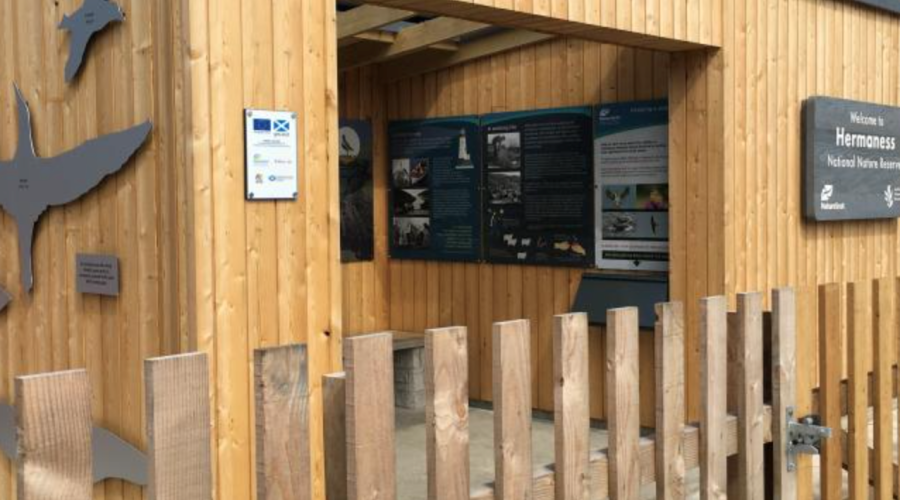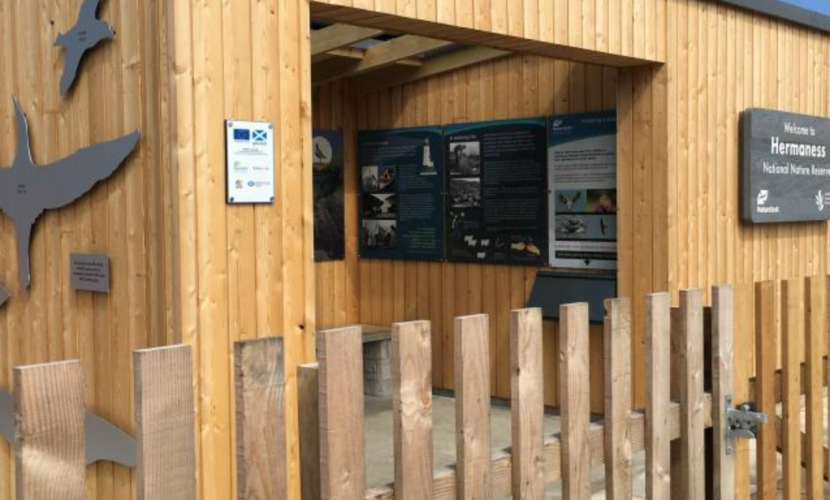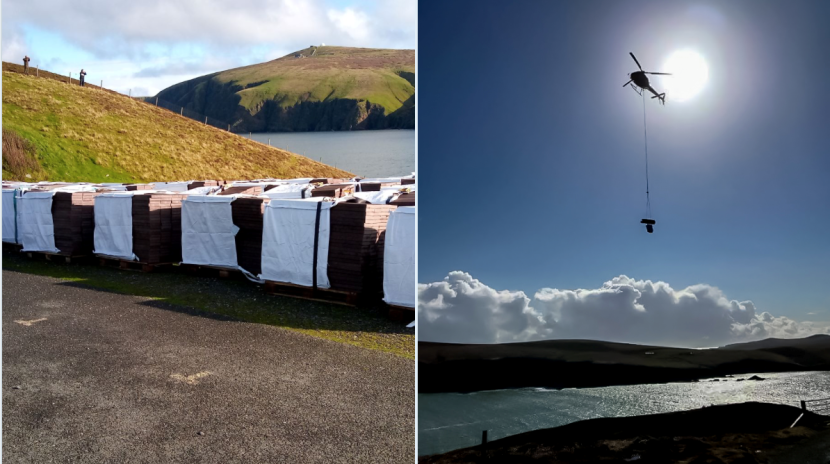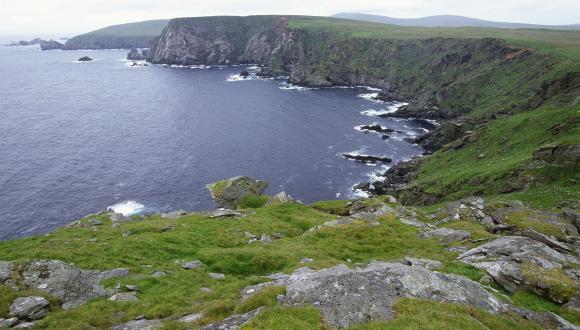
New facilities at Hermaness open
7 September 2022
In the middle of May, on a windy Shetland day, a new hill path and welcome area were officially opened at NatureScot’s airy Hermaness National Nature Reserve on Unst. It was a good news day, The work had progressed well, and the new facilities were drawing admiring glances.
Sadly, at the same time, numerous gannets and great skuas were succumbing to what quickly transpired to be one of the worst outbreaks of avian influenza in decades. This was followed by a decision to advise visitors to follow strict guidelines if visiting the seabird colonies at Hermaness in order to reduce the spread of this devastating disease and reduce additional stress on birds through disturbance.
Visitors have long been an integral part of the Hermaness story.
A new two-kilometre boardwalk acknowledges this, and traces the route of the historic path to Muckle Flugga signalling station on Hermaness Hill. In effect it creates a comfortable circular route around this ever popular nature reserve.

The path opening event brought to a conclusion an ambitious project to create a visitor hub and make significant access improvements at Hermaness. A boardwalk was the perfect solution across a fragile peatland habitat and delivers visitors to spectacular cliff views, whilst avoiding disturbance of rare nesting birds.
Work on this scale, in this environment, has had to be handled sensitively.
Helicopters lifted materials for a boardwalk extension into the reserve, in two exercises, the first in April 2021 and the second in October of the same year (to avoid the bird breeding season). Protecting the fragile environment was not only the reason for the project, but a factor in delivering raw materials. The existing challenges that nature faces here are well known and it was vital that the project didn’t add to these.
In addition to protecting vulnerable blanket blog and witnessing the avian flu outbreak, reserve manager Juan Brown tells of alarming ongoing decreases in arctic tern, kittiwake and arctic skua populations, crashes in which are linked to factors such as the availability of sand eels and rising sea temperatures.

In an era blighted by biodiversity loss and climate change telling the story of how important nature is, and how we must act to help, has never been more important. The new visitor hub will be a legacy for future years. The information panels, shelter, and toilets will create an enhanced visitor experience in a highly practical way and encourage visitors to linger and absorb the story of this globally important site.
As with so many successful projects partnership working was crucial to successful delivery. A partnership of NatureScot, Shetland Islands Council and VisitScotland tapped into £580,704 from the Natural and Cultural Heritage Fund, £286,300 from the Rural Tourism Infrastructure Fund and £19,857 from NatureScot.
Our Chief Executive Francesca Osowska was at the opening event and noted that “Hermaness is a truly special place, with spectacular cliffs that are home to internationally important populations of seabirds including puffins, great skuas and gannets.
“As Scotland’s nature agency, we aim to inspire many more people to discover and value our natural world. These fantastic new facilities will help locals and visitors alike connect to nature at Hermaness for generations to come, as well as protect the nature reserve and provide many benefits for Shetland communities.”
Francesca’s positive vision of the project was echoed by local councillor Ryan Thomson, who serves one of the North Isles wards. “This is great news for tourism in Shetland and in Unst particularly,” he said. “Hermaness NNR is an outstanding natural visitor attraction that draws many folk to the isles every year. These upgraded facilities will improve the visitor experience and help to protect the natural environment for the future.”
Hermaness has long been celebrated as a dramatic and spectacular haven for thousands of Scotland’s most iconic seabirds including fulmars, skuas, shags, gannets, puffins and kittiwakes. These impressive birds are a big draw, and increasing visitor numbers were causing erosion of peat on the old path to Hermaness Hill, where sensitive bird species also nest.
The new boardwalk is but one piece of a complex jigsaw but will certainly protect fragile peatland, which is important in mitigating climate change, as well as making sure nesting birds aren’t disturbed.
These are challenging times for many seabird species. Raising awareness of their plight is crucial if a greater understanding of their needs is to be achieved. This project will allow more people to enjoy the area and appreciate the issues here, while protecting the sensitive habitat that lies en route to the cliffs. It is cruelly ironic that yet another challenge emerged so swiftly following the opening of the new facilities.
Latest updates
Latest information on the situation regarding access and advice about visiting Hermaness visit can be found at the NNR page
Further information
The Natural and Cultural Heritage Fund is funded through the European Regional Development Fund (ERDF) with a multi £million investment in the Highlands and Islands. The Natural and Cultural Heritage Fund will invest in the Highlands and Islands of Scotland to provide more and better quality opportunities for visitors to enjoy natural and cultural heritage assets; encourage people to visit some of the more remote and rural areas; and create and sustain jobs, businesses and services in local communities. The purpose of the Fund is to promote and develop the outstanding natural and cultural heritage of the Highlands and Islands in a way that conserves and protects them.

The Scottish Government is the Managing Authority for the European Structural Funds 2014-20 Programme. For further information, visit their website or follow @scotgovESIF.




